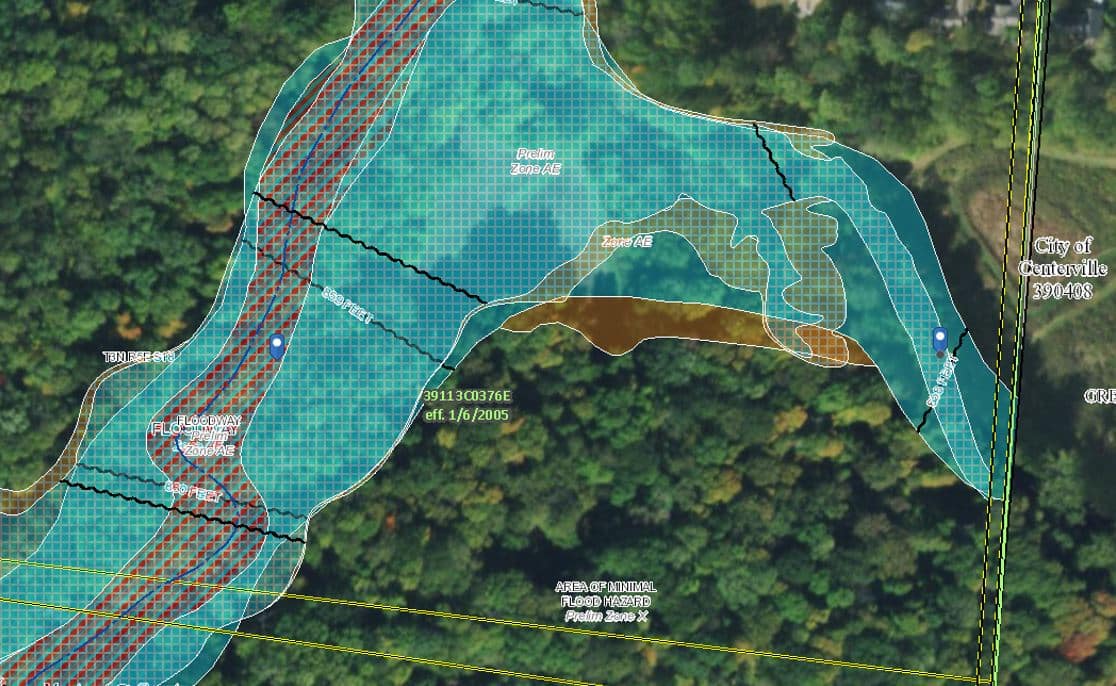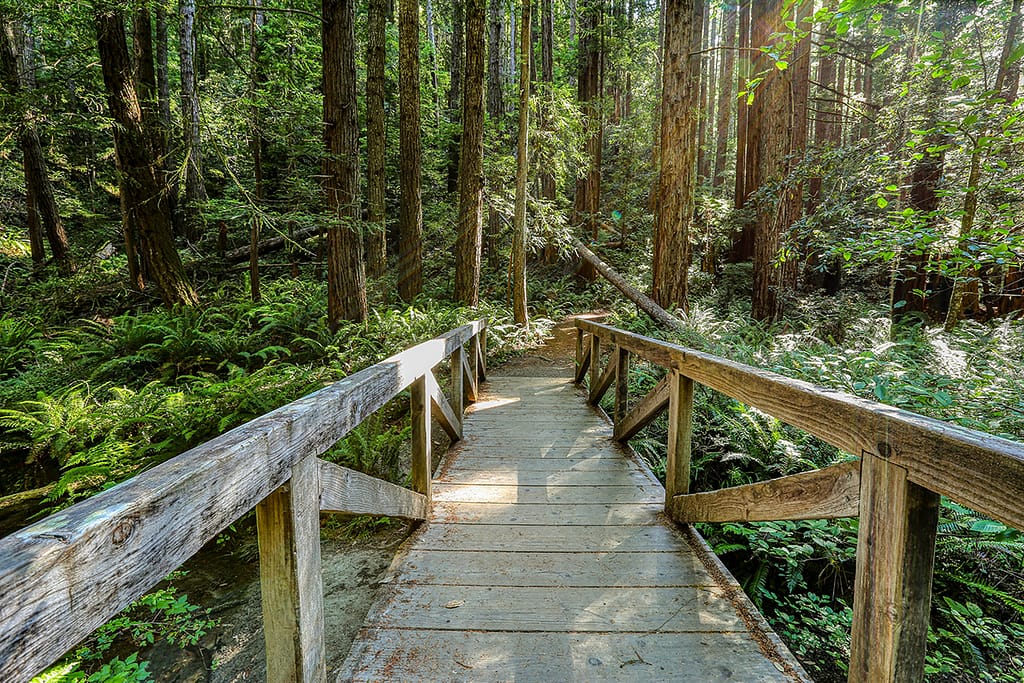Don’t have time to read? Watch it instead!
When a park, municipality, golf course, land developer or private owner needs a pedestrian bridge, determining what to do can be daunting. There are numerous styles and types of pedestrian bridge designs on the market today, and determining which one of these options fits the client’s needs is at the core of what Axcess does every day.
When Axcess first works with a client for a new pedestrian bridge application, there are several bridge design considerations we discuss together to develop an optimum design recommendation. These include:
1. Span
The most important criteria for a pedestrian bridge is its length, so this is the first thing to determine. Two primary inputs factor into bridge spans – onsite evaluation and floodplain evaluation – and these narrow down the style options.
Onsite Evaluation
Involves physical measurements and evaluation of the elevations at the site where the bridge is to be located. These factors determine the required length. This process is very straightforward.
Floodplain Evaluation
Many pedestrian bridges are located over waterways, which means an evaluation of the floodplain map is required for the bridge site. For pedestrian bridge projects, construction is typically not done in the floodway, which is the portion of the floodplain that carries high flow rates in a flood event. Depending on the flood map of the site, the bridge may need to be longer than it would first appear during a simple site visit.

2. Site Access
The second criteria that needs to be determined is how easy it is to get to the construction site. Certain bridge styles require heavy equipment and large/heavy materials for construction, and are therefore not suited to remote locations such as hiking trails. For example, compare a steel to a fiberglass truss bridge. For sites with easy access, the steel truss bridge is typically chosen, while the fiberglass option is chosen for very remote locations. This is because the fiberglass truss is significantly lighter and requires smaller equipment or manpower to install.

3. Aesthetic Desires
Once the span and site access are determined, the appropriate bridge styles have likely been reduced to a couple of viable options. At this point, Axcess works with the client to determine the best aesthetic option for the pedestrian bridge application while always being mindful of impacts on project cost. An example would be a suspension versus a truss bridge. Both styles may work for the same span; however, they have very different aesthetics and installed costs.

4. Materials of Construction
The final step is to determine the construction materials for the chosen bridge style. This is a trade-off between a higher initial cost of the pedestrian bridge and the ongoing required maintenance. A simple example of this is treated lumber decking versus reinforced plastic lumber decking. The treated lumber decking costs less initially but needs to be replaced multiple times over the life of the bridge. Axcess works with each client to determine the trade-off that works best for them.
The experienced designers and engineers at Axcess, LLC navigate these considerations every day and are ready to work with you to make your project a reality. Please get in touch today!


